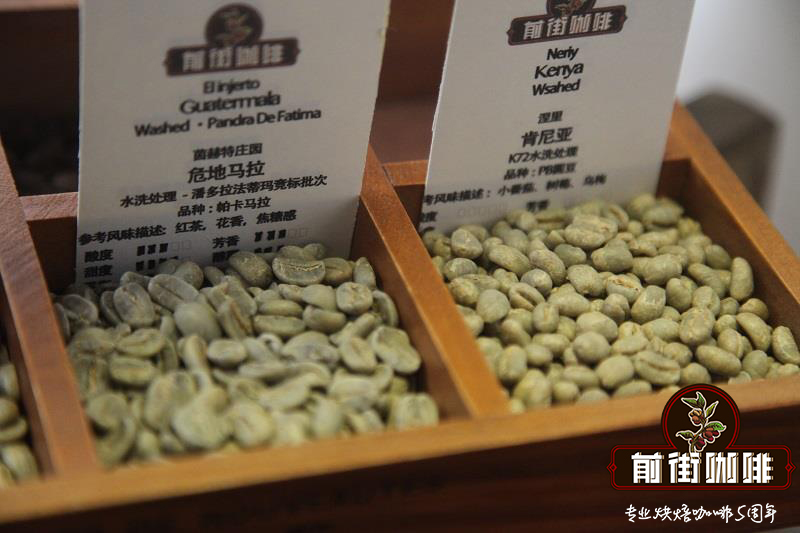History of the Origin and Development of Brazilian Coffee the Future trend of Flavor and Taste in Brazilian Coffee Bean producing areas

The Origin of Brazilian Coffee
Several historians agree that the arrival of coffee from the Old World to Martinique and the Antilles originated in 1714 when Mathieu de Clieu, the captain of the French army, obtained the first branch seeds brought by small American plantations.
The story tells us that the captain struggled to keep a coffee branch stolen from Louis XIV Gardens all the way across the Atlantic and eventually grow it in those islands. From then on, the coffee jumped to Haiti, Cuba and other parts of the Caribbean island, and finally to South America. As we see in the stories of the origin of coffee in Colombia and Venezuela, Catholic groups (Jesuits) are responsible for spreading coffee cultivation with their religion, but not everyone is willing to share coffee seeds with others.
Aware of the potential of this crop for the region, French Guiana is open to plantations and is willing to participate in the coffee economy. The Brazilian-Portuguese colonial government sent Colonel Francisco de Mello Parta as ambassador to deal with some border issues, but in fact, his task was to obtain seeds by seducing the wife of the governor of French Guiana. As the story says in 1727, back home, Parà became the first part of Brazil to grow in a rainforest without a dry season and a high labor force of slavery. Coffee cultivation began to attract the attention of large landowners who cut down large areas of the Amazon jungle for coffee cultivation and arrived in Rio de Janeiro in 1770, but similar to other countries in the region. It was not until 1830 that the economic value of coffee grew slightly.
The problem for some people is the interests of others. The Dutch East India Company is a multinational company founded in 1602, which has great power and influence in the Asian economy and has product markets from Asia to Europe. Nevertheless, due to some international conflicts and internal problems, the company has declined gradually since 1720. Brazil's economic rise could provide cheaper sugar for the European market, leading to the bankruptcy of Asian sugar producers. However, the last attack took place in 1770, when leaf rust caused the destruction of entire coffee plantations. As a result, the company closed around 1799, leaving other Latin American countries to dominate the coffee market.
After 1830, a series of independent outbursts changed the axis of power in Latin America and promoted the transformation of social paradigm. We can imagine that the early history of coffee cultivation in the United States was sustained by the labor force of African slaves. Slavery was officially abolished in 1888; at the same time, the use of labour by European immigrants increased, and the industrialization of cherry and bean processing kept prices sustainable.
The Republic of Brazil was born in 1890. In the early stage, it was similar to a military dictatorship. Nevertheless, the government recognizes the importance of coffee as a source of profit, especially due to the decline in the value of sugar and gold in the international market. The current policy allows coffee to be overproduced, hoping to replace competitors; this is a promising strategy. Until Black Friday in 1930 led to a decline in the value of coffee (which sounds familiar, right? ), requiring the destruction of millions of tons of coffee in the next few years to reduce the price of coffee. After a decade, Brazil accepted a change in its economic model, from single-crop agriculture to a diversified economy. It continues to be the world's largest coffee producer, producing more than Colombia and Vietnam. An interesting fact is that internal coffee consumption in Brazil is now higher than that in the United States.
Coffee production in Brazil
The main coffee areas are Minas Gerais, ESP í rito Santo, S ã oPaulo,Bahia,Rond ô nia and Paran á. Despite the huge demand for Arabica varieties from foreign customers, Robusta varieties are usually grown and used for the "blending" of blended coffee.
In addition, due to latitude, resulting in low UV emissivity and weather conditions, coffee plantations can be found at low elevations, even near the coast, allowing mechanical harvesting of cherries. Because of its productivity and tolerance to climate change, the income of the Robusta variety exceeds that of the Arabica variety, so drip irrigation systems are used on large amounts of land.
Brazilian coffee is also a source of profit for small farmers, who are unable to obtain huge investment in plantations and remain an important part of the coffee economy. However, it depends on the country; for example, in Bahia, coffee production is dominated by big owners, while in other areas, such as Sao Paulo, the lack of manual labour is meeting the demand for machinery investment. Overall, Brazil expects to dominate the global market through production.

Coffee tourism
Like Colombia and Costa Rica, Brazilian Coffee sees opportunities to diversify its coffee economy through tourism. Minas Gerais, north of Rio de Janeiro, promotes rural development away from famous beaches and cities, a relaxed environment different from Carnival.
Brazil's agriculture and economy are facing the consequences of climate change. In addition, there is a need to improve the social conditions of rural communities that lack education, opportunities, health problems and industrial pollution. However, we must recognize that the coffee industry has improved over the years and has brought benefits to rural communities across the country and has become a model for other developing countries.
Important Notice :
前街咖啡 FrontStreet Coffee has moved to new addredd:
FrontStreet Coffee Address: 315,Donghua East Road,GuangZhou
Tel:020 38364473
- Prev

What's the taste of AA in the Creamangarowulu Cooperative in Tanzania? Tanzanian coffee is an advantage.
AA TOP Tanzania Kilimanjaro Uru North Cooperative AA TOP Washed specifications: AA TOP varieties: Bourbon Bourbon, Kent kent production area: Kilimanjaro production area Kilimanjaro altitude: 1400-1800m harvest period: July-December refining method: 100% washing, sun or machine drying and ginseng
- Next

Is Kayanza's coffee the best in Burundi? How does Burundi coffee compare to Kenya?
Flavor: Citrus, Green Apple, Peach Origin: GAHAHE (KAYANZA /Kayanza Province) Processing: Washing Origin Kayanza Province is one of the most famous coffee regions in Burundi. Coffee farms are located in highlands, volcanic terrain fertile soil. But optimal growing conditions alone are not enough to produce high-quality coffee. To get top coffee, proficiency
Related
- Detailed explanation of Jadeite planting Land in Panamanian Jadeite Manor introduction to the grading system of Jadeite competitive bidding, Red bid, Green bid and Rose Summer
- Story of Coffee planting in Brenka region of Costa Rica Stonehenge Manor anaerobic heavy honey treatment of flavor mouth
- What's on the barrel of Blue Mountain Coffee beans?
- Can American coffee also pull flowers? How to use hot American style to pull out a good-looking pattern?
- Can you make a cold extract with coffee beans? What is the right proportion for cold-extracted coffee formula?
- Indonesian PWN Gold Mandrine Coffee Origin Features Flavor How to Chong? Mandolin coffee is American.
- A brief introduction to the flavor characteristics of Brazilian yellow bourbon coffee beans
- What is the effect of different water quality on the flavor of cold-extracted coffee? What kind of water is best for brewing coffee?
- Why do you think of Rose Summer whenever you mention Panamanian coffee?
- Introduction to the characteristics of authentic blue mountain coffee bean producing areas? What is the CIB Coffee Authority in Jamaica?

